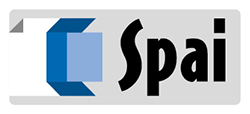How to write the instruction manual
After briefly telling the story of the instruction manual, or rather, how the evolution of the world of work, after the Industrial Revolution, has led us up to the recent legislation on work, in this article we talk about how to draft an instruction manual, in particular how we do it in SPAI.
The first questions are: what is the instruction manual for? What is the company’s policy on the machines it produces?
These are, in our opinion, the first questions to start from when you start to plan the drafting of an instruction manual. Clarifying the company policy of the manufacturer is fundamental to start the work in the right way. In other words, how the company wants to deal with those who buy that machine.
Who will transport the machine to the production site?
Who will install it?
What level of autonomy do you want to leave in the ordinary maintenance of the machine?
These are some of the questions that have a considerable impact on the manual that will be drawn up and which, in our opinion, cannot be overlooked.
Who writes the instruction manual? The technical editor
Until recently, the role of the technical editor, who writes the instruction manual, was marginal. The instruction manual was seen (sometimes it is still seen today) as a burden for the company, an obligation to comply with the law and a cost to be reduced as much as possible. Often the task of preparing the manual was delegated to those who had materially built the machine, who, however, had limited language skills and, at the same time, risked flying over important information taken for granted.
Today, with updates on occupational safety regulations and increased manufacturer responsibilities, the instruction manual has become a key part oft he machine. That’s how the figure of the technical editor has become professionally recognized.
How an instruction manual should be
By definition, when we speak of an instruction manual, we refer to information on how to use the machine (or product) correctly, conveniently and safely. The instruction manual uses text, words, signals, symbols or diagrams to convey information to those who will use the machine: transport, install, use, move, maintain.
The main features of the instructions for use concern ease of reference, clarity, simple and immediately comprehensible language.
The instruction manual must accompany the product throughout its life cycle and, according to point 1.7.4 of Annex I to Directive 2006/42/EC, it must contain the following information:
- the full company name of the manufacturer (and, where applicable, his authorised representative);
- the designation of the machinery, as indicated on the machinery itself, except for the serial number;
- the EC declaration of conformity or a document reporting the content of the EC declaration of conformity;
- a general description of the machinery, from which the main parts and their functions can be identified;
- the intended use of the machinery;
- a description of the places of work occupied by the operators;
- warnings of the residual risks which remain, despite the fact that the protective measures integrated into the design of the machinery have been adopted and despite the additional protections and protective measures adopted;
- instructions on how to carry out the work without risk:
- assembly, installation and connection, including drawings, diagrams and fixing systems and the designation of the frame or of the installation on which the machinery is to be mounted;
- putting into service; use; transport, indicating the mass of the machinery and its various components as soon as they are regularly transported separately; dismantling; adjustment; maintenance;
- where necessary, instructions for the training of operators;
- where necessary, the essential characteristics of the tools which may be mounted on the machinery;
- the protective measures to be taken by the user, including, where requested, the personal protective equipment to be provided;
- the conditions in which the machinery satisfies the stability requirements during use, transport, assembly, dismantling, out of service, testing or foreseeable failures;
- the operating method to be followed in the event of an accident or breakdown, for example procedures for releasing persons with body parts trapped between machine parts;
- if a blockage is likely to occur, the method of operation to be followed to enable the machinery to be unblocked safely;
- the specifications of the spare parts to be used, if they affect the health and safety of the operations
- if the machinery is likely to emit non-ionising radiation which could cause harm to persons, in particular persons with active or non-active implantable medical devices, information concerning the radiation emitted for the operator and exposed persons;
- if necessary, mounting instructions to reduce noise and vibration emissions (e.g. use of shock absorbers, characteristics of bases, etc.);
- the level of airborne noise emitted by the machinery.
The instruction manual according to SPAI
With respect to the information listed above which, according to Directive 2006/42/EC, must be contained in the instruction manual, we at SPAI believe it is essential to pay particular attention to their placement within the text. The Directive does not oblige you to create individual chapters for each of this information, so it is important to insert them where necessary and useful for the correct and safe use of the machine. For example, the description of the machine parts and their functions does not necessarily have to be a separate chapter containing all of them, but the individual descriptions and functions must be found on those pages of the manual that deal with the operating procedure that calls into question them. This is one of the cornerstones of our way of working, which avoids providing the operator with a manual made up of continuous references to different sections of the text, on the contrary, it provides a clear and easy content.
Our phases of drafting the Manual:
- Discussion with the company to understand the company’s policy towards the product covered by the instruction manual: from this meeting we will understand which information (based on the previous list) must be present in the manual delivered to the customer.
- Finding all the technical information to be included in the manual: assembly, disassembly, transport, installation, operation, criticality, maintenance, spare parts…
- Writing and layout of the manual.
- Verification of the contents and of the communicative effectiveness through the consultation of third parties.
- Publication
- Realization of the masters, which allow to use the parts already prepared and verified to reduce time and costs when new versions of the manual will be needed.
- Effective management of language alignment, starting from the law that obliges to provide the manual in the user’s language within the European Community. This is another factor with a strong impact on time and costs.





